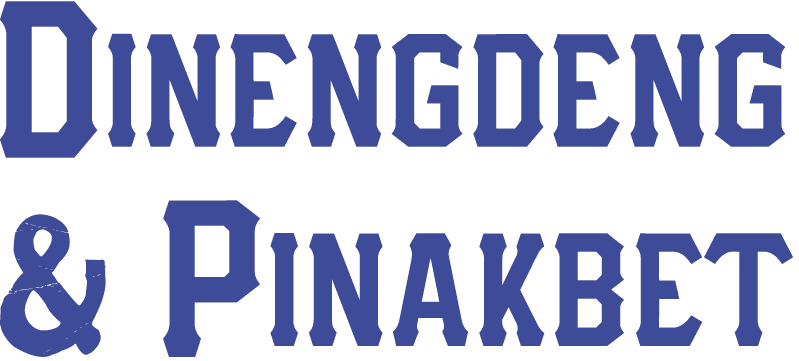OK Boomer!
Gilbert S.C. Keith-Agaran
“Okay, Boomer” apparently is a “thing.” “Young” people mutter it (usually sarcastically) in response to some remark by an “older” person (you don’t even have to be an actual Baby Boomer) that reflects the generational divide.

Photo: Gil S.C. Keith-Agaran
Haven’t heard it used to my face yet but I assume the blank looks of the “kids” at Verizon Wireless while I explain my problem with my iPhone 11 Pro hints at it. I want to correct them—I’m a cusper—not one of the main Baby Boomer cohorts born between 1946 and 1955. My parents had my sister and me at the tail end so we straddle Generation X. But that would likely justly earn me a biting nod.
Venture capitalist Bruce Gibney (an early PayPal investor) concentrates his ire for “Baby Boomers” born during the first twelve years after World War II. Those Boomers, in his assessment, grew up without experiencing either Great Depression deprivations or World War II unifying trauma. As a result, Gibney writes “The boomers inherited a rich, dynamic country and have gradually bankrupted it.” Another Generation X-er, New York Times Op-Ed columnists Michelle Goldberg recently observed in The Argument podcast that the “Okay, Boomer” meme is well-deserved because that generation—our generation—has much to answer for.
And after sixty years of Statehood, are Boomers responsible for both the good and the bad in Hawai‘i simply because we lived it?
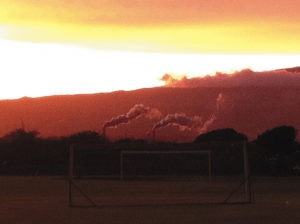
Photo: Gil S.C. Keith-Agaran
Frankly, I think Hawai‘i boomers can claim a little different experience from our mainland cousins. Perhaps local kids use a different version than their mainland counterparts. Back in my day, kids respected their elders. But sometimes, I sense “Uncle” or “Aunty” has now morphed into more than something you respectfully call any older local person.
First, few of us descend from the folks who controlled Hawai‘i society in local antebellum days. Most Hawai‘i baby boomers were born when Hawai‘i was still a Territory and largely still dominated by the plantations and their Bishop Street buddies. Plate lunches come from that time—heavy, starchy meals for people working long days in the fields. Lucky you guys no need work pick pine or cut cane anymore. Okay, Uncle.
The oldest among us Baby Boomers were just entering our teen years when the Dixiecrats in the U.S. Congress finally agreed to let Republican Hawai‘i into the Union provided Democratic Alaska got in first. Jack Burns, the Honolulu cop who helped recruit and organize returning Nisei Veterans into a politically powerful local Democratic Party, negotiated that deal. Allied with unions like the ILWU (heavily Filipino in the rank and file), the Democratic Party revolution of the mid-1950s overthrew the Republican-Big Five oligarchy. Kids, imagine if the old GOP boys had gotten their way and Hawai‘i joined the Union first. Jack Lord’s cop show would have been “Hawai‘i Four-Nine” instead (yes, Virginia, before Alex O’Loughlin and Scott Caan, there was a Cold War version of Hawai‘i Five-O when villains in the islands had less access to automatic weapons and when the police “booked ‘em, Dano”-ed the culprits rather than killing them in violent fire fights). Okay, Uncle.
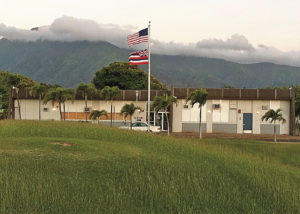
Photo: Gil S.C. Keith-Agaran
It’s a challenge for my generation to explain to younger people how much change has happened during our lifetime. Back in my day, you had only Maui High Sabers, Baldwin High Bears, St. Anthony Trojans and Lahainaluna Lunas playing football and the other major prep sports. The Lāna‘i Pinelads and Molokai Farmers joined in for basketball season. You had an actual fairground and racetrack where you now have car lots and warehouses off Pu‘unēnē Avenue. Some of my Saber classmates still lived in the small camp homes built by the plantations for their workers. Now we have a Maui campus of Kamehameha Schools (Warriors) and King Kekaulike High School (Na Ali‘i) upcountry, along with Seabury Hall (Spartans), Hāna High (Dragons), and Maui Prep Academy (Pueo) fielding athletic teams in two separate divisions! And old camp houses, freshly painted and slightly renovated, go for half a million dollars. Okay, Uncle.
Back in our day, my high school classmates included children of doctors, lawyers, business executives and lunas—Hawaiians, Japanese, Filipinos, locals and haoles—in the same classroom. My Pā‘ia Yankees little league team featured a Plantation manager’s kid at shortstop and an irrigator’s son in centerfield. An early Native Hawaiian Activist assisted by an undercover vice cop coached my high school varsity basketball team. Okay, Uncle.
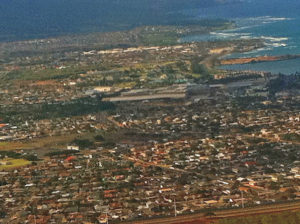
Photo: Gil S.C. Keith-Agaran
During summers, my high school friends and I worked at the Maui Pineapple Cannery where you could make some good money (and one of the high school English teachers was a luna). Getting a job after school to pay for gas in your used car was fairly common too. There are warehouses now where the Cannery once stood and pineapple has been reduced to a couple hundred acres in the Hāli‘imaile area, and fewer kids have afterschool jobs. Okay, Uncle.
Back in our day, we were the first to assume flying from one island to another as a fairly normal way to travel. Do you know Hawaiian and Aloha used to have interisland flights every thirty minutes and at one time there were two or three smaller airlines, too? When I commuted from my home on Maui to my job working for Governor Cayetano on O‘ahu, I could buy a monthly pass, get on a morning flight to Honolulu and then hop on any flight to OGG with an open seat whenever I could get to HNL that evening. Okay, Uncle.
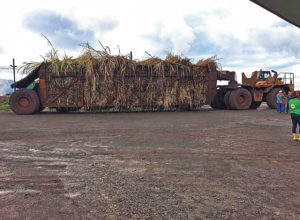
Photo: Gil S.C. Keith-Agaran
Back in our day, Kahului had one of the first “shopping centers”—a complex where you could shop for groceries, purchase clothing and hardware, and maybe get a meal at Shirley’s or the drugstore soda fountain, and a haircut and shave. In fact, you could get your Guri Guri with or without beans. You had three markets—A&B, Noda and Ah Fook’s—and two drug stores—Toda’s and Craft’s. Today it’s just an open lot where food trucks can make a weekend buck at the Open Market. Okay, Uncle.
Young people, understandably, roll their eyes at all that “history.” That’s normal. I hate to think that the AJA-Union Democrats and their Baby Boomer heirs failed in some way to help our own children and great-grandchildren appreciate the changes more. You often read on social media references to how “the Donkeys”—said with some resentment and contempt now—didn’t build on that transformative time for the good of all but just for themselves and their cronies. “Land and Power,” cuz. “Waimanalo Blues.”
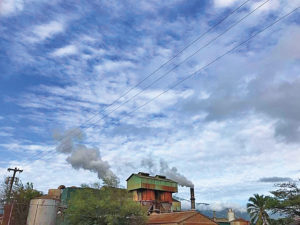
Photo: Gil S.C. Keith-Agaran
Our history since statehood reflects complacency and some smugness. Our Sakada forefathers, given their druthers, did not want their own children to follow them into the sugar and pineapple fields or the mills, although some did so and earned fairly good livings. But as the plantations went out of production, the options in service industries offered less opportunities for middle class rising. The Visitor Industry took on greater and greater importance. Construction provided jobs, when you were off the bench, as more hotel rooms were added. And the new immigrants worked those jobs just as the Sakadas and their contemporaries had provided labor on the plantations in the generations prior.
In truth, choices got made in the past that in hindsight didn’t work out fully as envisioned. Dream City allowed plantation laborers to own homes outside of the sugar worker camps—a longterm project with existing island residents as the market. As tourism grew and jets democratized travel so people could visit more regularly, vacation and second homes in Hawai‘i gradually became a thing, too. Condominiums. Timeshares. And developers, including many of the plantation agribusinesses looking for added revenues as their crop profits flattened, built for that market rather than for local residents or their workforce or the children of that workforce.
Did boomers ruin Hawai‘i like they ruined the rest of the country (and perhaps the world)? It was a series of collective decisions—some made by us and some forced on us by outside forces—but Thank God we’re still in the fight to swing things around.

Photo: Rizamay Basig
We can certainly look at favoring local people in supporting housing projects priced better for residents and putting what resources we have into those kinds of communities. I walk my Chug each morning at the Kahului Regional Park (one of Shan Tsutsui’s best ideas in retrospect). You can see portions of the nearby Kahului/Maui Lani neighborhoods and Wailuku Heights and the fallow fields that Tsutsui’s Mahi Pono company now owns.
But there are still signs of the rural life that once defined Maui. You sometimes see some cattle lounging near the fence line that separates the park from private property. The other day I saw a wild pig burst out from the bushes near Maui High School and take off down the sidewalk along Papa Avenue. And the rash of brush fires this past year dusted nearby communities with black snow. You can’t help but feel some nostalgia for some of the simpler parts of growing up on Maui back in our day.
Folks in public service sometimes envy our neighbors in the Pacific. New Zealand and Australia and Saipan and Polynesia can control their borders—keeping out invasive species easier and even controlling who can own property in their borders. But Hawai‘i, like other states in the American Union, doesn’t have the power locally to limit landownership to our residents. Even the Hawai‘i Tourism Authority understands that unlimited growth in the number of tourists is taxing not just our infrastructure but our people’s willingness to have so many visitors (Aloha. Spend your money. Go home. Mahalo.). And perhaps that realization by even the keepers of our economy indicates change. That’s a good thing.
 Gilbert S.C. Keith-Agaran grew up in Pā‘ia and Kahului while Pioneer Mill, Pu‘unēnē Mill and Pā‘ia Mill still operated. He represents Central Maui in the Hawai‘i State Senate.
Gilbert S.C. Keith-Agaran grew up in Pā‘ia and Kahului while Pioneer Mill, Pu‘unēnē Mill and Pā‘ia Mill still operated. He represents Central Maui in the Hawai‘i State Senate.

